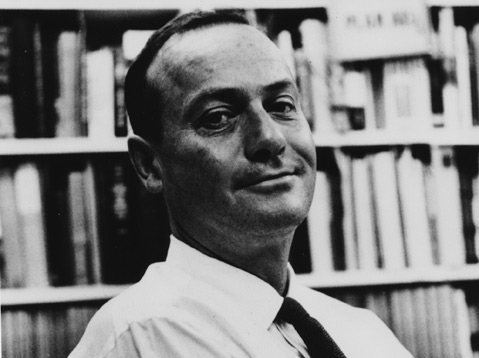
On the eve of what would have been his 100th birthday, the great detective novelist Ross Macdonald is poised to enter into his greatest period of renown since the 1970s, when his books were international best-sellers and he was on the cover of Newsweek magazine. This longtime Santa Barbara resident, known to his friends and family by his birth name, Kenneth Millar, is the subject of an unprecedented posthumous revival that looks set to position him as the most significant figure in the highly influential genre of hard-boiled detective fiction. The decidedly highbrow and prestigious Library of America is leading the way, having recently published the first of a projected three hardcover volumes anthologizing Macdonald’s Lew Archer books, thus setting his work alongside not only the usual suspects, Raymond Chandler and Dashiell Hammett, but also on the shelf with such literary heavyweights as F. Scott Fitzgerald, Edith Wharton, Philip Roth, and John Cheever. Also this fall, Arcade Publishing has released the previously unpublished decade-long romantic correspondence between Macdonald and the Pulitzer Prize–winning writer Eudora Welty under the title Meanwhile There Are Letters. The Archer Files, a collection of Macdonald’s Lew Archer short stories, is also back in print, with new material collected by Macdonald’s biographer, Tom Nolan.
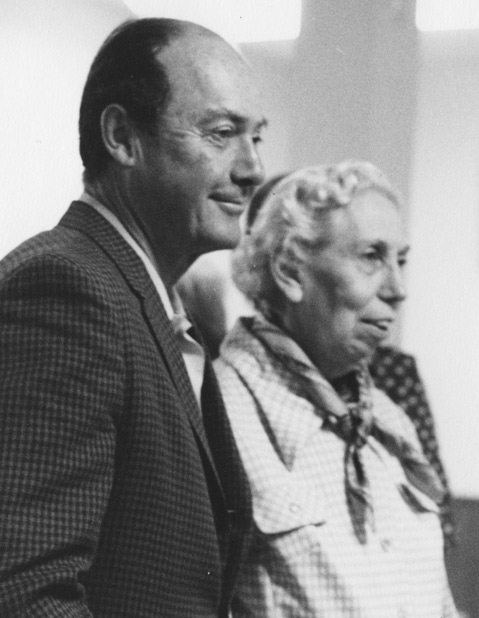
Although the Ross Macdonald centennial bonanza will stretch into 2016 with the publication of the next two Library of America volumes and It’s All One Case by Kevin Avery, a collection of previously unpublished transcripts of interviews between Macdonald and Rolling Stone rock music writer Paul Nelson, the most exciting development for many fans may be cinematic. Variety reports that Joel and Ethan Coen have signed on with Hollywood mega-producer Joel Silver to adapt Macdonald’s 1966 novel Black Money for the big screen. Black Money, which is set in a town remarkably similar to Montecito, is Macdonald’s take on The Great Gatsby, and the combination of the Coens’ wry sensibility and Macdonald’s hard-boiled yet literate prose could well prove irresistible.
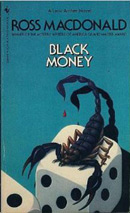
With all this activity, it’s increasingly clear that 2015 is not only the centennial of Macdonald’s birth but also the year of the rebirth of Macdonald as a serious figure in American literature and a major figure in Santa Barbara history. Santa Barbara is the city that Macdonald immortalized as Santa Teresa in his novels and the location from which he took much of his inspiration. It is where he raised his family, where he experienced triumph and tragedy, and where he passed away in 1983 after a long battle with Alzheimer’s. The time is ripe to reassess the work of the man who many claim to be Santa Barbara’s all-time greatest writer — a man who uncovered the crimes and misdemeanors that hide behind the shining façades of the California dream.
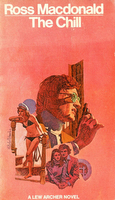
Surprisingly, apart from Nolan’s excellent 1999 biography of Macdonald, the literature on Santa Barbara’s greatest writer is thin, especially when compared to the mountain of words written about the two hard-boiled mystery writers with whom Macdonald is typically grouped, Hammett and Chandler. It is time to start a new conversation about Macdonald’s achievements as an artist, and about Santa Barbara noir, the genre Macdonald invented out of the unique constellation of glamour and decadence, sunshine and shadow, that defines Santa Barbara and that provided Macdonald with his backdrop for the Archer books.
The Name Is Macdonald
Ross Macdonald is the identity that Kenneth Millar adopted in 1958 after several other aborted tries at a pen name. Kenneth Millar was born in Los Gatos in 1915, raised in rural Canada, and educated in Michigan. He first came to Santa Barbara in 1946, living on Bath Street. Macdonald moved to the city permanently in the 1950s, eventually settling into a home on Via Esperanza in Hope Ranch, together with his wife, Margaret Millar, an accomplished and popular writer of suspense fiction, and their daughter, Linda, a troubled soul whose life was a series of tragic episodes culminating in her untimely death at age 31 in 1970.
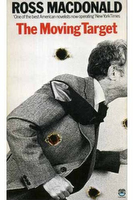
Macdonald and the Archer books were slow to catch on in the 1950s, and he lived from book to book, struggling between publication dates and suffering from an emotional breakdown that led him to psychiatric care. His personal experience with classic Freudian psychiatry galvanized his fiction, allowing him to provide his hero Archer with a probing, psychological dimension missing from his predecessors in hard-boiled fiction, Hammett and Chandler.
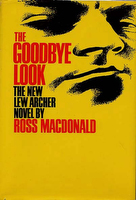
After more than a dozen Archer novels, Macdonald broke through to international fame with the publication of The Goodbye Look and The Underground Man. Macdonald was lionized in the late 1960s and early 1970s by a coterie of influential New York critics. In 1969, John Leonard, writing in the highly influential New York Times Book Review, over which he had dominion, declared Macdonald was more than a mystery writer; he was a “major American novelist.” In a cover review of The Goodbye Look in the New York Review of Books, acclaimed screenwriter William Goldman called the Archer books “the finest series of detective novels ever written by an American.” When the venerated Eudora Welty chimed in with a review of The Underground Man, proclaiming Macdonald as “a more serious and complex writer than Chandler and Hammett ever were,” it was official — Ross Macdonald had arrived as a mainstream artist.
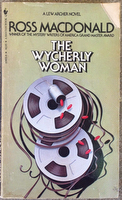
Riding the crest of this wave, Macdonald made the cover of Newsweek magazine in 1971, and the Archer books became best-sellers during the 1970s. But after his death in 1983, his popularity waned — so much so that by the turn of the century, fewer than half of his books were in print and volumes were hard to find on booksellers’ shelves.
That woeful condition began to change when specialty houses such as Black Lizard published some of the Archer books, but the combined arrival of the Library of America collection, the collected correspondence of Macdonald and Welty, and the Archer Files places Macdonald back at the forefront of the literary scene.
Out of the Shadows
The first Library of America volume is a perfect entry point for readers seeking to start with the Archer series and for readers familiar with Macdonald’s work seeking to refresh their recollections. The four novels demonstrate what the detective novel at its very best can do.
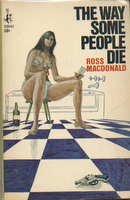
The Way Some People Die is a full-throttle start to the collection. It was not the first Archer book, but Macdonald and his critics consider it a breakthrough book for the writer, where he shook loose of the hard-boiled influence of Chandler and Hammett and wrote with a new sense of freedom, particularly with regard to his emphasis on the psychological dimension to crime. The Way Some People Die shows how the hard-boiled hero exemplified by Philip Marlowe and Sam Spade became, in Macdonald’s hands, a more complex and empathetic figure, and the story presented a new model for a psychologically informed treatment of crime victims and witnesses, as well as perpetrators.
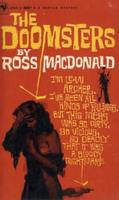
This new model was informed by Macdonald’s own experiences. According to Macdonald, everyone suffers, even Lew Archer. In The Doomsters, one of the books in the Library of America collection, Macdonald lets Archer explain: “Try listening to yourself sometime, alone in a transient room, in a strange town. The worst is when you draw a blank, and the ash-blonde ghosts of the past carry on long twittering long-distance calls with your inner ear, and there’s no way to hang up.”
Throughout the 1950s novels, Archer assumes the dual identity, as detective and counselor, shamus and shrink, which became his permanent persona through the end of the series in 1976. Archer reflects on his role as detective and his personal code of conduct in these memorable words from The Barbarous Coast: “The problem was to love people, try to serve them, without wanting anything from them. I was a long way from solving that one.”
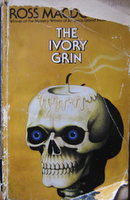
The Barbarous Coast, set among the thriving movie-studio industry of the 1950s, is one of the most entertaining of the Library of America collection. The scene of the crime is a cabana at a private beach club for the privileged class that bears a strong resemblance to Montecito’s famous Coral Casino, a club to which Macdonald and his wife belonged throughout their Santa Barbara residency. The Barbarous Coast demonstrates how the detective novel can, in the hands of a writer as sensitive as Macdonald, both accurately describe and savagely comment on the deterioration and malaise that exists behind the façade of a high-flying consumer society.
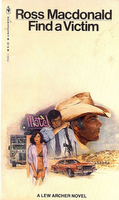
In Macdonald’s novels, the sculpted, palm-tree-lined suburban streets of Montecito and Hope Ranch can be every bit as mean as the urban settings favored by Chandler and Hammett. A certain kind of hero is needed to discover and dig up the nightmares buried behind the dream-factory façade. Archer is that hero. Using little more than his wits and a special talent for asking the right questions, he navigates these mean streets with prototypical self-possession; Archer often gets his hands dirty while working a case, but he never lets the darkness he encounters harden his heart. Archer, like Macdonald, always remains open to second chances: for victims, for perpetrators, and for himself.
According to Macdonald, as the novels progressed, Archer “became a man who was not so much trying to find the criminal as understand him.” That worthy search is a compelling reason why the Archer books remain so relevant today.
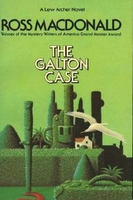
The Library of America collection culminates with The Galton Case, the masterpiece of Macdonald’s 1950s output. With The Galton Case, Macdonald finally perfected his unique formula by merging detective suspense textured with sharp cultural criticism with a deep appreciation of psychology that was the product of his intense personal journey through psychotherapy.
In The Galton Case, Archer, the private eye/shrink, plumbs the depths of an intricate Oedipal family mystery that rests on an unstable bedrock of tragedy, a formula that has prefigured and influenced hard-boiled detective fiction for decades to follow, including Robert Towne’s screenplay for Roman Polanski’s classic 1974 film, Chinatown. That film’s unforgettable “She’s my sister and my daughter” scene between Faye Dunaway and Jack Nicholson and the claustrophobic sense that no one can escape their family or their past are direct echoes of Macdonald’s method in The Galton Case. The Galton Case succeeds on every level. It is a great American novel.
Lew’s Legacy
Complementing the sheer pleasure these books offer is their historical significance. Macdonald’s contributions to the detective novel and American popular culture have been profound. Santa Barbara’s Sue Grafton, a hugely successful detective novelist and Macdonald’s greatest acolyte, picked up the torch for Santa Barbara noir. Grafton paid homage to Macdonald by adopting Santa Teresa as her stand-in for Santa Barbara for her long-running Kinsey Millhone Alphabet series, which has now reached the letter X.
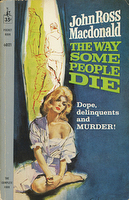
Leading American crime novelists James Ellroy, Michael Connelly, Richard North Patterson, and Jonathan Kellerman have all cited Macdonald as a primary influence. So have Canada’s Linwood Barclay and Ireland’s John Connolly.
Macdonald’s influence is not confined to literature; it has been felt in film, television, and rock and roll. One artist who acknowledged Macdonald’s influence was the 1970s Southern California rock star Warren Zevon. Both Ross Macdonald the writer and Kenneth Millar the man had a profound influence on helping Zevon recover after a serious emotional and physical breakdown during his Santa Barbara residence. Zevon acknowledged the influence by dedicating his 1980 album Bad Luck Streak in Dancing School to “Ken Millar, il migliore fabbro” (“the finer craftsman”). Zevon, always perceptive, recognized how close the character of Lew Archer was to Millar/Macdonald’s true persona. “It was like a dream come true,” Zevon told Paul Nelson. “At the lowest point in my life, the doorbell rang. And there, quite literally, was Lew Archer, on a compassionate mission, come to save my life.”
A Man of Letters
No writer was more fulsome in praise for Macdonald than Eudora Welty — she helped boost Macdonald’s reputation in the late 1960s — and her words were routinely used for blurbs on Macdonald’s paperbacks. When Welty first championed Macdonald, the two had never met nor even shared a word. That changed forever when Macdonald sent Welty a note in 1970, thanking Welty for her support, a note that started an intimate exchange of hundreds of letters during the next 12 years — until Macdonald’s advancing Alzheimer’s ended the exchange with silence. Some 345 letters have survived and are published in Meanwhile There Are Letters, the majority of Macdonald’s letters written from his home in Hope Ranch.
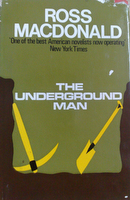
The title is drawn from a lovely 1972 letter Macdonald wrote to Welty after the pair met for the first time in New York City, some two years after the correspondence began. “I’d never thought I’d hate to leave New York, but I do,” Macdonald wrote. “I feel an unaccustomed sorrow at not being able to continue our friendship viva voce, and in the flesh, but these are the chances of life. But there is a deeper and happier chance which will keep us friends till death, don’t you believe? And we’ll walk and talk again.” The breathtaking postscript followed: “Meanwhile there are letters.”
These previously unpublished letters cast a light on Macdonald’s inner life that his Archer books can only hint at. The letters range from friendly discussions of their joint literary output to lively discussions of politics and literature and include a persistent but largely unfulfilled desire for the pair to meet again. Through it all, the knowledge that Macdonald was married and that Welty was alone — a “Southern spinster,” in her wry use of obsolete vernacular — only serves to deepen the impact of the couple’s intimate exchange.
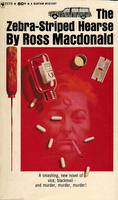
In interviews, Kenneth Millar has suggested he originally assumed the identity of Ross Macdonald because he wanted to provide space for his wife to pursue her literary career as Margaret Millar. But anyone familiar with the Archer novels will suspect that the reasons for an assumed identity are more complicated.
As Tom Nolan’s biography confirms, Macdonald, whose favorite novel was The Great Gatsby, believed in the power of second chances. Indeed, it is fair to say that Millar created the identity of Ross Macdonald as a second chance for notoriety for an otherwise private man. In turn, as Warren Zevon sensed, Ross Macdonald created Lew Archer, a bachelor hero, childless, free from obligations, but honest to the bone, as a second-chance alter-ego projection for himself.
The Goodbye Look
Finally, late in life, both Eudora Welty and Ross Macdonald found a second chance for love in their correspondence. Their beautiful letters are a testament to the power of words.
In the end, even words run out, and Macdonald’s voice was silenced by creeping senility. In 1982, Welty visited Santa Barbara and said her good-byes to Kenneth Millar as the world was saying good-bye to Ross Macdonald. Two years later, Welty wrote but never finished a short story called “Henry” that is included in the collection, its first time in publication. Henry, like Macdonald, suffers from debilitating Alzheimer’s; is cared for by his wife, Donna; and is loved by the unnamed narrator.
“Henry” may be a minor contribution to Welty’s body of work, but coming at the end of the letters and in the wake of the Archer novels, its impact is profound, especially when the narrator says of Henry/Ross/Kenneth, “I am seeing everywhere around me his mind that I love emptied of all it held, all that packed it, pressed it, lighted it up — memory.”
The collected letters offer a window into the mind of Ross Macdonald before it was emptied of all the wisdom that it packed.
Fortunately, Macdonald’s singular voice as a writer has not been silenced. His effortlessly flowing prose, his intuitive feel for the human condition, and his enduring integrity ensure that his work will continue to be read by people who care about what the detective novel can accomplish. The combined publication of the 1950s crime novels, the Archer short stories, and the Welty-Macdonald letters constitute a treasure trove for readers, those new to Macdonald and those returning to his works, those interested in detective fiction and those simply interested in great prose.
Santa Barbara should be proud of Kenneth Millar’s creation of Ross Macdonald and of Ross Macdonald’s creation of Lew Archer. With Sam Spade and Philip Marlowe, Hammett and Chandler created the model for a hard-boiled, tough-fisted hero that readers can fantasize about being. With Lew Archer, Ross Macdonald created an unflinching, compassionate, world-weary, but always willing hero that we can recognize in ourselves.



